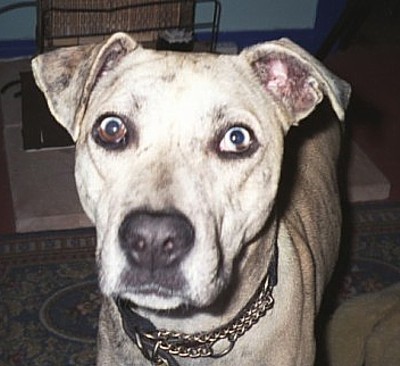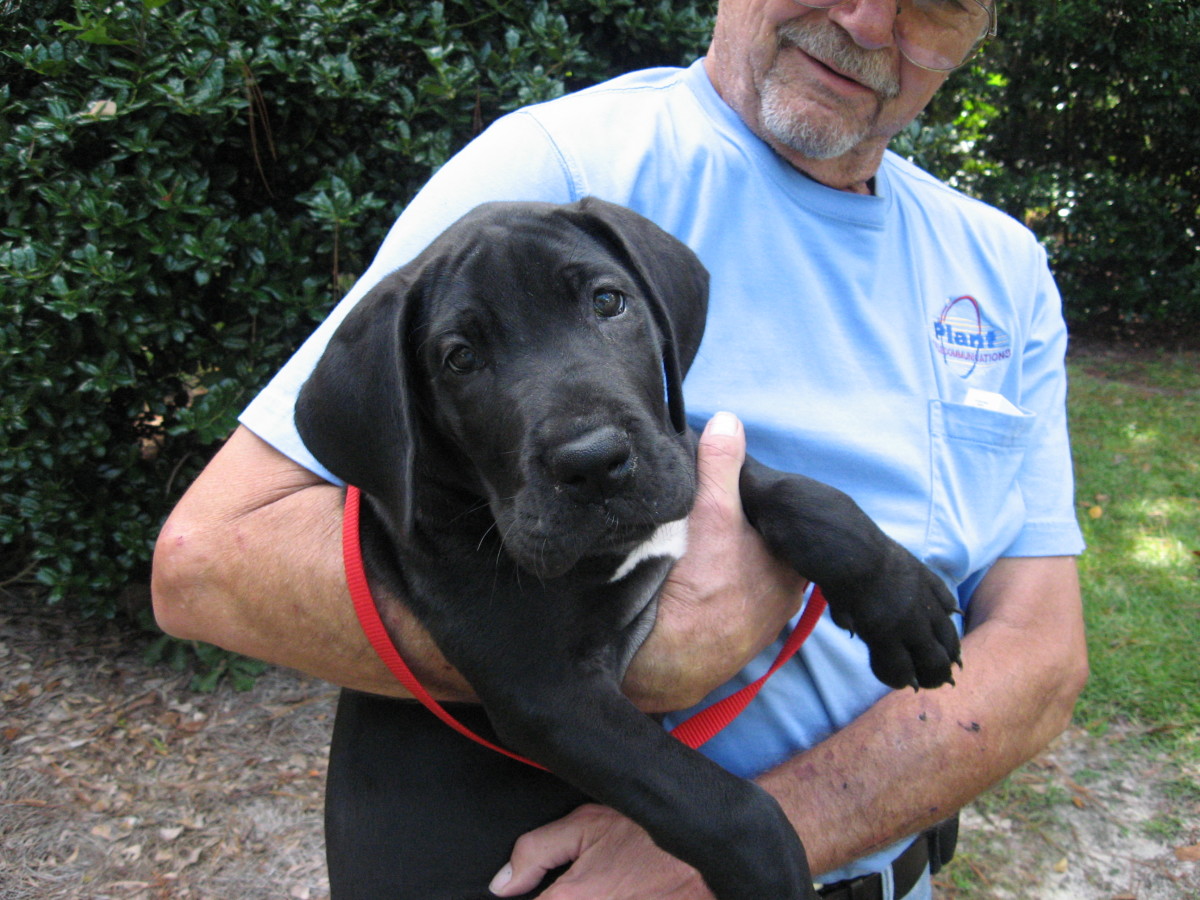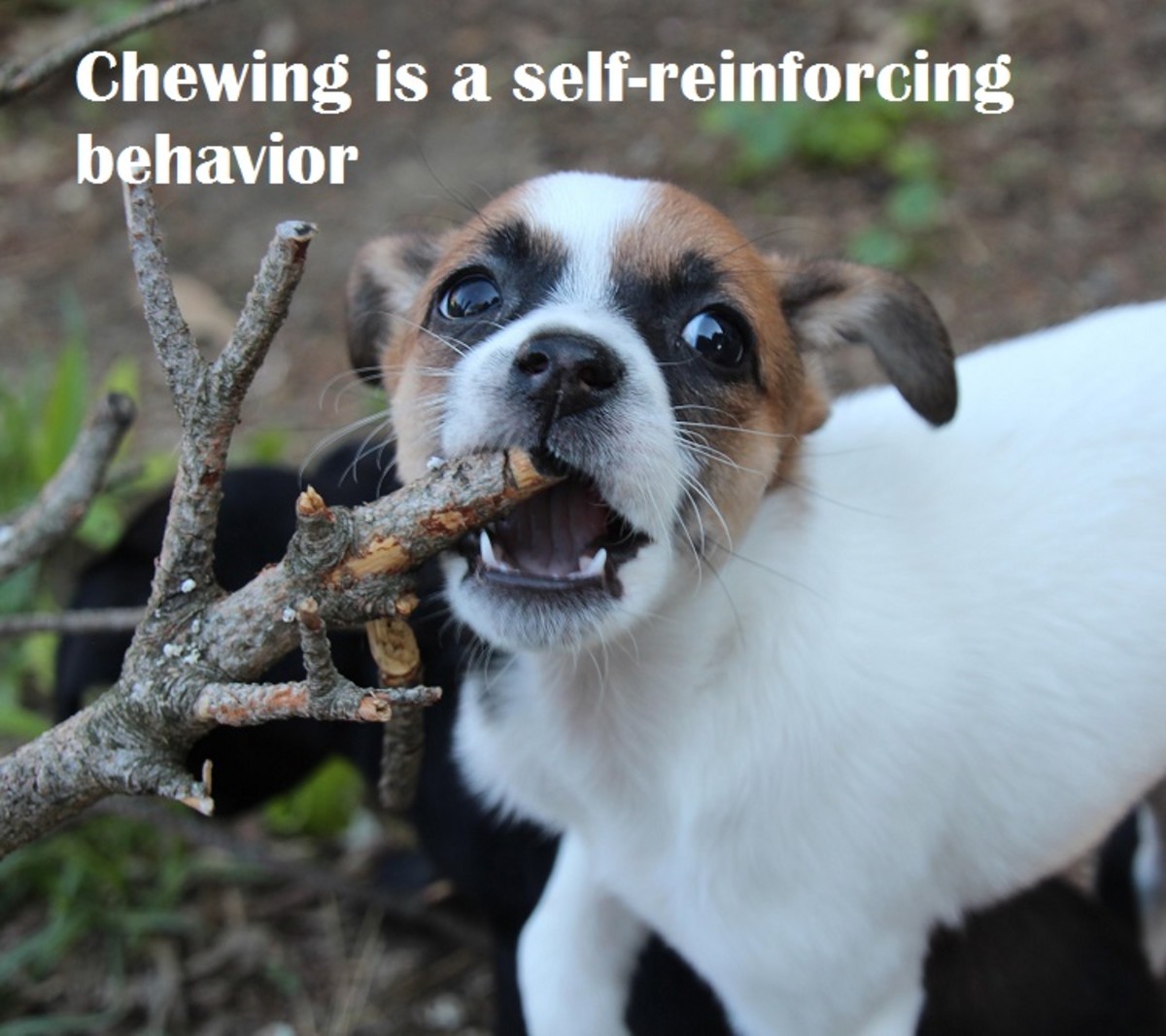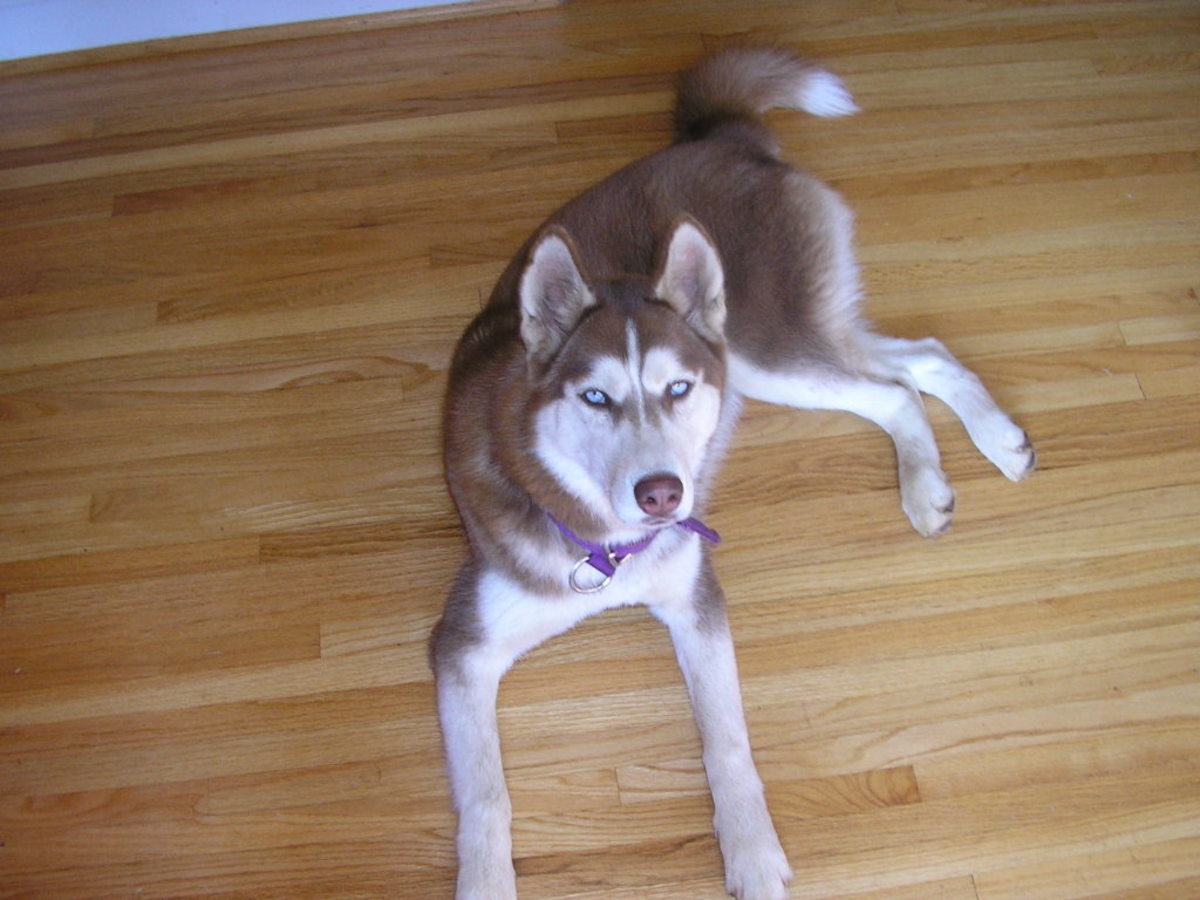House Training & Crate Training Your Adult Dog
What Causes Failed House Training In Adult Dogs?
Having an adult dog who has accidents in the house can be very distressing and very wearing, but this is often the case when you adopt an adult dog. The situation could arise from lack of training or improper training from the dog's previous owner, or it could just be that the dog is confused or frightened in his new surroundings.
Crate Training Helped Amber With House Training.

Think Critically to Identify Potential Issues
When determining how to go about managing this situation, there are a few things you should look at. Consider your dog's consistency in choosing the same spot or random places. Does your dog have accidents in the same place every time, or is in various locations? If he is using the same spots every time, it means that he thinks that is where he is supposed to go. If it is random, it may indicate a medical problem or a dietary problem.
Are You Giving Your Dog the Right Food?
If you are feeding a food that is too rich, it can cause your dog to have accidents. This is especially true of people food. Invest in a good quality, moderately priced brand of dog food. Outrageously expensive foods aren’t necessarily better. Cheaper foods that have lots of artificial colors and filler can cause problems.
Buy a good brand of dog food that is right for the age and activity level of your dog. For example, if your dog is mostly a house dog and only goes on a walk once a day, don't give him a high energy, high protein, performance food. Give your dog a food designed for mature dogs with a low to moderate level of activity.
Have You Taken the Right Steps as a Responsible Dog Owner?
If your dog is male and not neutered, know that this can contribute to the problem in regards to urination. An intact male dog may want to mark his territory. Neutering may or may not help with this problem, but it is always a good idea, anyway. A neutered male dog makes a better household pet, and having your pets spayed./neutered is the responsible thing to do to avoid the currently overwhelming problem of unwanted and abandoned pets.
Crate Training is a Humane Training Technique
Once you have ruled out or dealt with medical and dietary problems, you can begin training. Crate training, a humane method, is a good idea if you have to leave your dog in the house when you are out. Learn the gradual process, from short durations to a full work day, and its benefits beyond house training.
With crate training, you put the dog in a traveling crate just big enough for your dog to stand up and turn around.
Get your dog used to crating whenever you are gone and cannot watch your dog or let him out. Although this may seem mean, it really isn't. dogs sleep most of the time, anyway and don't move much from one spot. Using a crate helps to house train the dog because he will not want to relieve himself where he sleeps.
This Airline Kennel Style is Best!

Versatile Crate Training has Many Uses
Having your dog crate trained is also handy when you have friends over who are afraid of dogs, or if you just need to put your dog out of the way for awhile so that you can work on your house or do some other thing where he would be in the way. Crate training is also useful in cases of destructive chewing. It is a good way to protect your belongings and keep peace in your home. My dog is crate trained, and she stays in the crate whenever I go out. It is a safe place for her, and she prefers to be in the crate during thunderstorms because she is very frightened of them.
Follow These Practical Training Steps
Begin with fairly short periods of time, say an hour or two. You can gradually build up to a full work day. If you need to be gone longer than that, you will want to make arrangements for someone to check on your dog and take him out to relieve himself and play a little bit.
- When you begin training, take your dog out to his specified area and be sure he relieves himself before you leave.
- Put your dog in the crate with a good sturdy chew toy, and leave.
- Don't leave any food or water. This will just make a mess and may cause your dog to need to relieve himself. You can leave a rugged toy, such as a Kong.
- When you come back, let your dog out first thing and take him straight outside to his designated area.
- When he relieves himself, praise him mightily.
If you can practice these steps consistently, your dog will soon learn that there is one place to relieve himself, and it is not in your house!
A Rugged Toy Helps Your Dog Bide the Time

Downplay Mistakes and Praise Success
Use positive reinforcement with enthusiastic praise for appropriate behavior. Many articles and videos advise using treats as rewards. I, personally, do not use treats as reinforcement for training with any animal. I believe use of treats causes animals to become needy, nippy and spoiled. I have always found that enthusiastic praise and pets provide ample motivation.
If your dog has an accident in the crate, don't scold him. Just take him to his designated spot and go through the drill. He will be embarrassed enough, and dogs hate to make a mess where they sleep, so having an accident in the crate is something your dog will be naturally motivated to avoid.
Be Calm and Supportive, Not Scary!
If you do find that your dog has had an accident in the house, and especially if you catch him at it, take him firmly by the collar, show him the offending item, and firmly tell him "NO!" Then take your dog outside to the place where he is supposed to relieve himself and use those key words to inform him that "Good dogs poop outside!".
If you can leave him safely outside to think about it, this is a good reinforcer. Dogs hate to be separated from their best friend (you!) so a 15 minute time-out is a helpful way to seal the lesson. But only do this if your dog can be secured inside a fence or by a tether. Don't ever let your dog run loose.
Be Patient and Seek Help as Needed
In my experience, most dogs will house train within a week or two. Of course it takes longer for puppies, but the basic training principles are the same. If training takes longer than a couple of weeks for an adult dog, be sure to consult your veterinarian. Have your dog checked for any health problems that may be causing the accidents.
Build a Strong Foundation
You have two things on your side with house training:
First, it is a dog's nature to want to please you. If you are consistent in being firmly disappointed when your dog has an accident and extremely happy when he relieves himself appropriately, he will quickly learn to do as you wish.
Second, dogs don't want to make messes where they live and sleep. If your dog feels firmly established in your home and has his own crate to sleep in, he will know that the house is not the right place to relieve himself. You just need to show him, firmly and consistently, where the right place is, and soon that is where he will go.
This article is accurate and true to the best of the author’s knowledge. It is not meant to substitute for diagnosis, prognosis, treatment, prescription, or formal and individualized advice from a veterinary medical professional. Animals exhibiting signs and symptoms of distress should be seen by a veterinarian immediately.
© 2008 justmesuzanne





